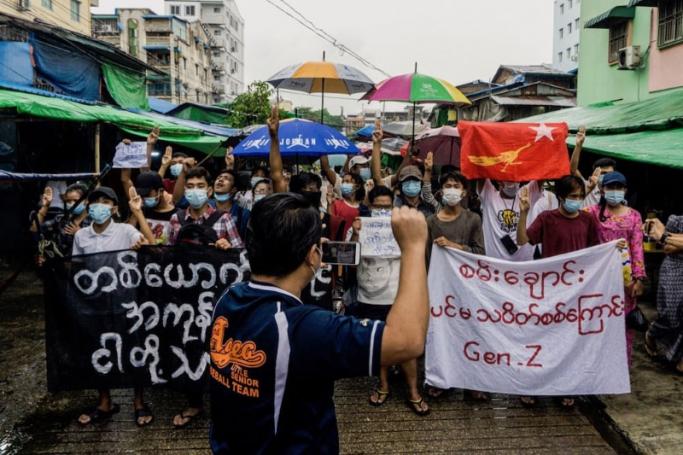Whether it was scenes of Buddhist monks on the streets during the 2007 “Saffron Revolution,” wrecked homes in the wake of 2008 Cyclone Nargis, or clashes between protesters and security forces in 2021, the role of “citizen journalists” has been crucial in delivering the news of Myanmar to a local and international audience.
Fledgling journalists have been tagged VJ or video journalists or CJ for citizen journalists. Their role first came to prominence during the 2007 Saffron Revolution when Buddhist monks took to the streets in the earlier protest against the Myanmar military government.
One documentary that helped tell this tale, showing the work of these journalists, was “Burma VJ: Reporting from a Closed Country”. This is a 2008 Danish documentary film directed by Anders Østergaard. It follows the Saffron Revolution against the military regime in Burma, with some of the footage filmed on hand-held cameras in an era before smartphones made an appearance.
The footage was smuggled out of the country, physically or over slow and makeshift internet connections in Myanmar. Other parts of the documentary were reconstructed, which caused some controversy.
However, what the documentary “Burma VJ” did was highlight the importance of citizen journalists, either solo efforts by non-professionals, or the work of exiled Burmese media, who attempted to get the story out to an international audience.
The CJ coverage of the 2007 protests was followed a year later by similar efforts to tell the story of the devastation wrought by the massive Cyclone Nargis of April and May 2008 that killed an estimated 138,373 people. Nargis was the fifth deadliest cyclone of all time.
While the military government attempted to downplay the damage to their country – reluctant to let in foreign aid or aid workers – CJ coverage in terms of news, photos and videos helped to inform the outside world of the horrific outcome of the storm and the ineffective efforts of the authorities to provide help.
Today, with the predominance of smartphones, fast internet, and social media, it is easy to forget just how limited communications were in Myanmar in 2007 and 2008, when mobile phones were slow, expensive, and uncommon.
At the time, CJ and VJ efforts to dispatch photos and videos depended on a limited number of slow connections and security concerns. There was no “Facebook Live” feed options back then. CJs who worked for exiled media organizations DVB, Mizzima and Irrawaddy worked around the clock during the Saffron Revolution and the Cyclone Nargis after-effects to get the news reports, photos and videos out.
Fast-forward to today and the current crisis. By the time the Myanmar military decided to end their limited democratic experiment in February 2021, virtually every young city dweller was armed with a smartphone and an internet connection.
Overnight, young people flipped from taking “selfies” and fun photos of their friends to snapping pictures or shooting video of the massive protests that broke out in the main cities and towns across the country in response to the military coup.
A deluge of photos and videos flooded social media, particularly Facebook, the “social” outlet of choice for young Myanmar citizens.
The work of independent media companies was turned on its head overnight on 1 February 2021. Several companies closed down their offices and attempted to go underground, aware that they would be targeted by the military, which had barely tolerated them in the past. Several exile media organizations, including Mizzima, had returned to the country less than a decade earlier under the Thein Sein regime.
In contrast, established pro-regime media companies continue to operate in the country, publicizing government news and steering clear of controversy.
Telling the true story of the Myanmar crisis has proved tough. Dozens of journalists were arrested in the months that followed the coup, and many were tortured in detention. Many journalists quit due to the dangers posed by the crisis.
But a number of young people took up the role of CJ, operating independently, or providing reports, photos and videos to established independent media outlets. Some are experienced journalists working full-time. Some are freelancers, depending on limited payments per story. Others are keen newbies, committed to making a difference, who may or may not be paid.
In the first few months of the protests, many CJ operated relatively openly – barely disguised with scarfs or “covid masks”. But as the Myanmar junta authorities tightened control and sought to detain people attempting to broadcast the news, a more cautious approach became a necessity.
Today, CJs – typically operating in the cities - attempt to blend in with normal life, taking care with their security. It is a “cat-and-mouse” game that needs care to avoid getting caught by the authorities who continue to clamp down on dissent and people they consider their enemy – independent media.
VJs and CJs carry out crucial and potentially dangerous work. And they are the mainstay of the reporting coming out of this country in crisis.












